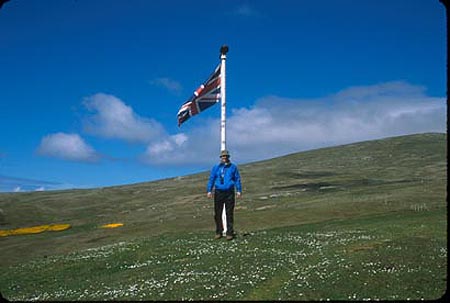
With the 25th anniversary of the Falklands War coming up next month, British security forces on the Falklands are getting ready for any actions taken by Argentines. “The Argentine government is very different from the one in 1982 but is pressing its sovereignty claim and has reduced co-operation,” said Falklands governor Alan Huckle on recent rhetoric from the Kirchner administration.
Interesting point, as well as the SLR (British) and FN FAL (Argentine) being the same (except the Argentine weapon was able to go Auto by switch, than by modification with a match stick). Both sides used the GPMG, another FN product. British tracer was red and the ammo was 4:1, 4 ball to 1 tracer. Argentine tracer was green, and 1:1:1 or 1 ball, 1 AP and 1 tracer.
No too long in to the war, this became irrelevant as the British used Argentine ammuntion that they had captured.
Probably by men such as these.

Men of the Support Coy, 45 Cdo, Yomping to Port Stanley with the Union Flag high on the whip antenna of a PRC-350.
One of the most famous images of the War.
And here is another famous image, and controversal.

HMS Conqueror returning to Scotland, with a Jolly Roger flying to indicate a successful cruise (ie the sinking of ARA General Belgrano).
Some people, including British people, thought it a bit off. Actually it is a tradition taht dates back to the very earliest submarine actions in the Royal Navy. So the PC Brigade can do one.
She also could have had a broom to indicate a “clean sweep”, every target engaged sunk. But for what ever reason, she did not fly a broom.










.jpg)
.jpg)

















